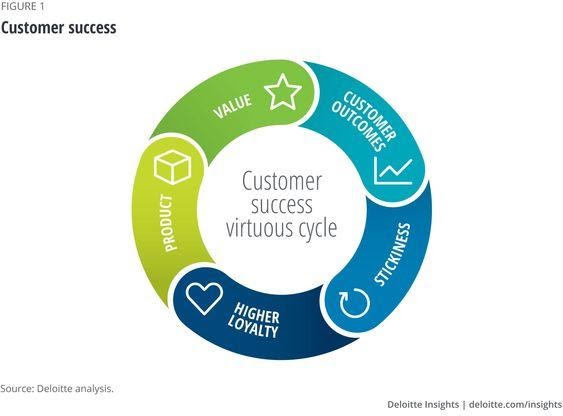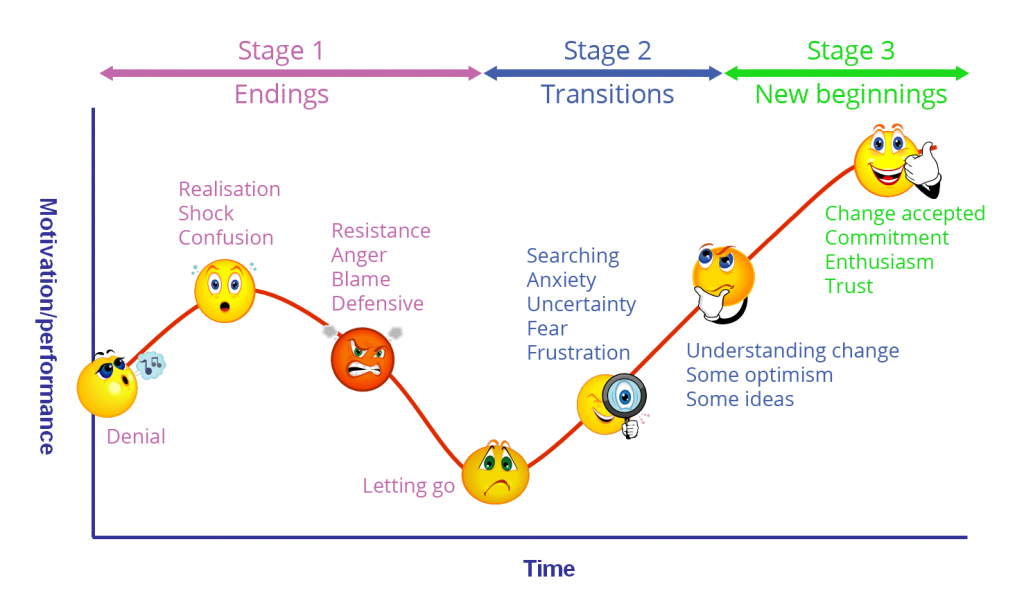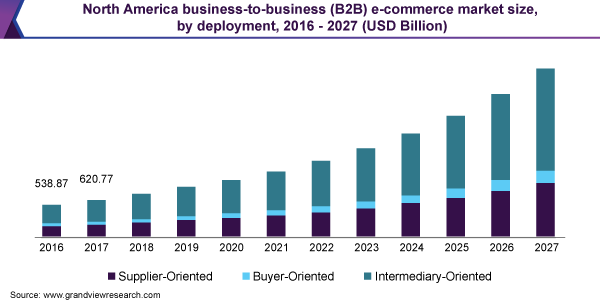In the world of B2B sales, eCommerce is where it’s at. The move was already underway to shift more sales online. The COVID-19 pandemic only served to accelerate the move to digital selling.
If your company isn’t currently engaged in B2B eCommerce, it probably will be soon. And if you are already selling online, chances are the growth in sales may require a re-platforming to a solution that better fits your company needs. Whether you are engaging in B2B eCommerce for the first time or re-platforming a legacy B2B eCommerce solution, e.g., moving to a headless architecture, it can be difficult to get all hands on deck. But if the project is going to be a success, everyone must row at the same time in the same direction. Easier said than done. However, by implementing a survey and feedback collection strategy you’ll go a long way in minimizing chaos and poor communication and maximizing training and productivity.
eCommerce projects touch all areas of the company
Both eCommerce re-platforming and implementation projects require company-wide coordination. Sales and marketing are concerned about how leads will be handled and deals closed, customer service needs to provide input into support requirements, warehousing will want a say in order processing, finance may be anxious about credit checks and billing, and IT wants to make sure everything integrates.
And the C-Suite and project managers just want the project to be delivered on time, on budget, and with the benefits promised.
It’s a big ask. That’s why it’s important to utilize surveys in the early stages. Ask each department questions such as:
- What are we doing now?
- What do we want to do in the future?
- What are the potential challenges you see during migration?
- How do we hope to resolve them?
Survey outside the company too
IDC research shows 2/3 of the CEOs of successful global companies are shifting their strategies from traditional to online to improve the focus on the customer and the customer experience. These CEOs know that at the heart of every successful digital transformation you’ll find the customer. It’s the needs of the customer that drive the change. And the change impacts everything from the products you offer to how you offer them. You provide better products and value and as a result, achieve higher sales from customers that are more loyal. So, it only makes sense to find out what your customer wants.

And the best tool to find out what your customers want is a customer needs assessment. Not only will you uncover the needs of your customers, but the responses will also shed insight into your hits and misses when it comes to meeting those needs. You can use the needs assessment with individual customers before embarking on a broad-based customer survey to make sure you are asking relevant questions such as:
- What features do you look for?
- What benefits should a product like ours provide?
- How does using our product improve your business or your product?
Then you can survey to find out:
- How customers feel about buying online
- What services (returns, warranty issues, etc.) they would like to see digitized.
- Would guided search or chatbots improve their buying experience?
- Do they need EDI or punchout catalog integrations?
When the new site’s up and running, survey again to see how the new site meets their needs. You can ask questions such as:
- What was your first impression?
- Is anything missing from the product pages?
- Were you able to find the information you needed?
- Did you exit the website without making a purchase? If so, why.
Collect feedback throughout the change curve
Collecting and acting on the information you collect is an important part of change management. And eCommerce re-platforming or implementing eCommerce is a big change for a company. By using the information you collect through surveys and interviews, you can reduce the change curve.
According to the latest ecommerce statistics, nearly 20% of all retail sales now happen online, and this number is expected to keep growing. This rapid shift highlights the importance of having a robust and user-friendly ecommerce platform.

At the very core, people resist change because of fear. The source of the fear is as individual as the employee. Common fears are:
- Wasting resources
- Commitment
- Responsibility and failure
- Pain
Resources are scarce. And resources committed to this project can’t be allocated to new product development or other marketing efforts. So, this fear is very real. When you identify this fear through feedback you can communicate how the project has been planned and budgeted, the resources allocated, and the expected return on the investment.
Any type of change means saying good-bye to the way things have been done in the past and committing to a new way of thinking and doing. For those that fear this commitment, lack of trust is usually the reason. An employee might not want to commit to eCommerce because they’ve been burned by a past experience. When the feedback shows there are commitment issues, it’s time to communicate the vendor vetting process and make sure that needed input is gathered from all areas before a vendor or platform is selected.
No one wants to be responsible for a failing project. And the fear of failing can cripple a company. From the C-suite on down, the innovators in the company should be cheerleaders for the re-platforming or eCommerce implementation project. When feedback highlights a fear of failure, these cheerleaders combat fear by communicating the need for change and the opportunities lost by settling for the status quo.
Change can be painful. Learning new workflows, processes, and software isn’t always easy. With any large project, there are bound to be bumps in the road. When feedback indicates pain, it’s time to reassess the progress, adjust if necessary, and to keep communication open. If training is already ongoing, it might need to be accelerated or more in-depth. If training hasn’t started, reassure employees with communication about how and when training will take place. When it comes to fear of change based on the fear of pain, it’s best to acknowledge the fear and be realistic.
Engage with those opposed to change
When there’s any large project such as re-platforming or implementing B2B eCommerce, there are bound to be naysayers. The best way to turn naysayers into cheerleaders (or at least neutral or positive) is to actively engage.
That naysayer might be onto something. But you’ll never know if you don’t engage during the feedback collection process. This employee might have deep insight into a particular workflow or process and can spot potential problems on the horizon. You’ll never know if you don’t engage and act on the feedback.
Others might be afraid of the new technology. It’s crucial to identify these people during the survey and feedback collection process. Start training with these people early and ease them into using the new technology.
An employment engagement survey, when used properly, is a great way to show employees that management is listening. Engagement surveys won’t fix known problems, but they can uncover problems you didn’t know you have. And when you act to correct these problems, engagement increases. The key is to act on the feedback you receive.

Are your naysayers feeling overwhelmed with the amount of change? An effective tactic is to implement the changes incrementally. This may lengthen the dip in the change curve but not the depth. If the re-platforming or switch to eCommerce is in conjunction with other changes, it’s best to make them one at a time. Implementing a new ERP or WMS is not the time to decide to tack on a new eCommerce platform.
Onboard employees and customers
Implementing a new way of doing business requires both employees and customers to learn new processes and workflows. The good news is that your new eCommerce platform should make doing business easier for both.
But realize there will be an onboarding process. For customers, send out emails explaining how to set up accounts. Forward thinkers may even establish accounts for existing customers, populated with their buying history. You may offer incentives for setting up an account on the new platform (5% discount or net 45 instead of net 30 terms) or have sales reps contact customers directly to set up their accounts.
Follow-up with those that established accounts and made a purchase to find out how they felt about the experience. This can be an auto-generated survey sent after the first order or an open-ended questionnaire completed during an interview.
Onboarding employees should focus extensively on training. Pre-training assessments identify weaknesses and areas for improvement. Once training is developed and underway, it can include new workflows, how to use new technology, and what to do when something goes wrong. Post-training assessments let you know if further training is needed. Before you design your training programs, it’s important to survey the needs of your employees and so that the training program you create gets them up and running comfortably. You can have call center employees role-play and practice taking orders, looking up customer history, and directing customers to where they can find answers to questions.
Use data to form decisions
The best decisions are data-driven decisions. So, it’s important that project managers and team leaders have the best data in hand. By collecting feedback from employees and customers during the re-platforming process (or when initially implementing eCommerce) you get the data you need and allow all parties to take part in idea-sharing. This identifies small problems before they become large and can spot inefficient use of resources. A combination of individual and team surveys and internal and external interviews will provide that insight and data to make better decisions during the change process.
Ask and then act
Whether you are moving your B2B eCommerce business to a new platform or engaging in eCommerce for the first time, you’ll be taking on a company-wide project. The success of the project depends on how well you plan and execute. But it also depends on how well you monitor and adjust along the way.
You can avoid much of the chaos by keeping your finger on the pulse of the project through surveys, interviews, and assessments. And don’t forget. It’s just as important to act on the insights you gather as making the ask in the first place.



